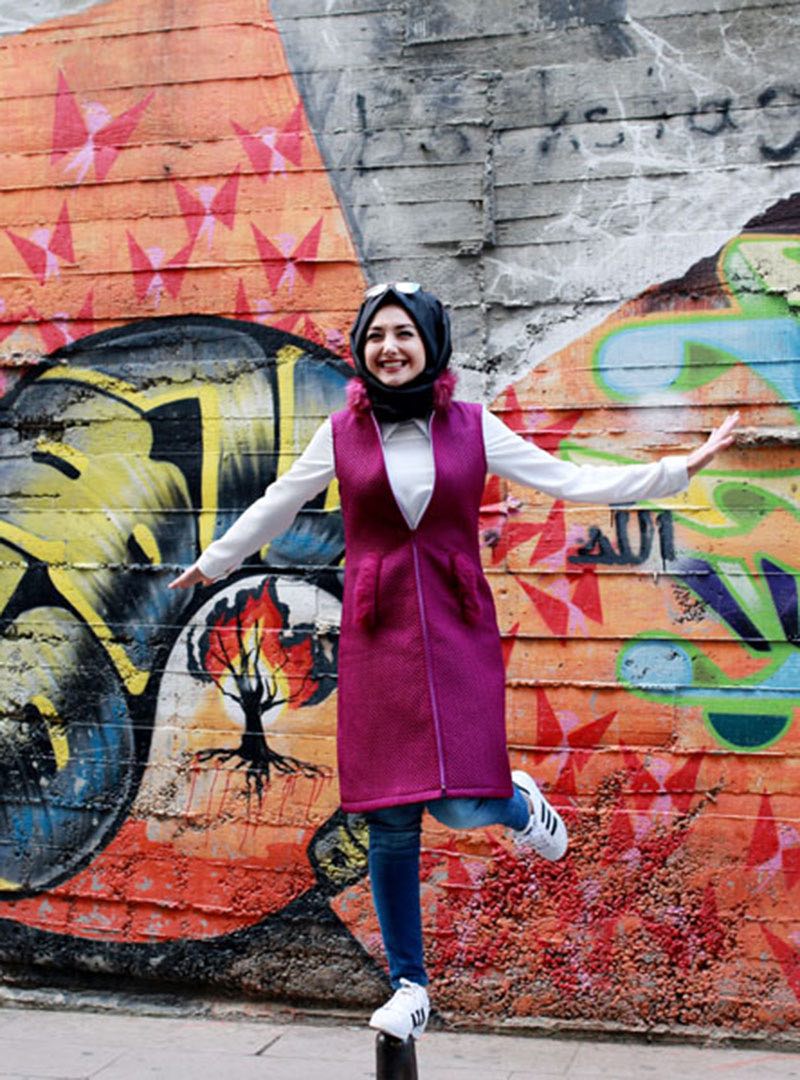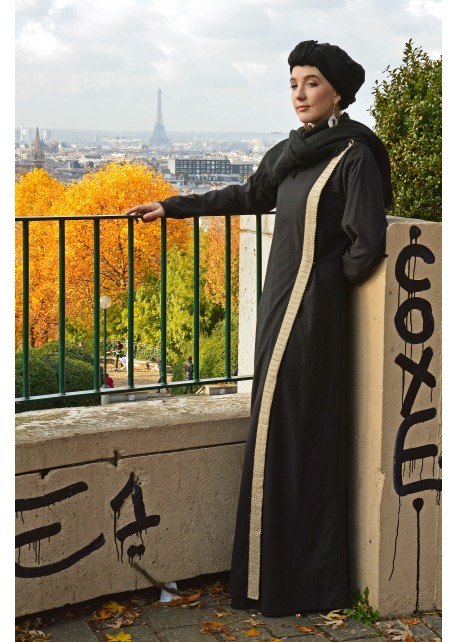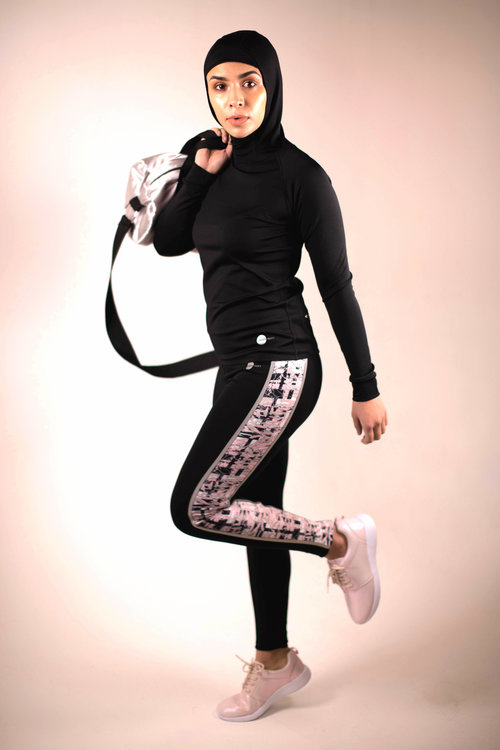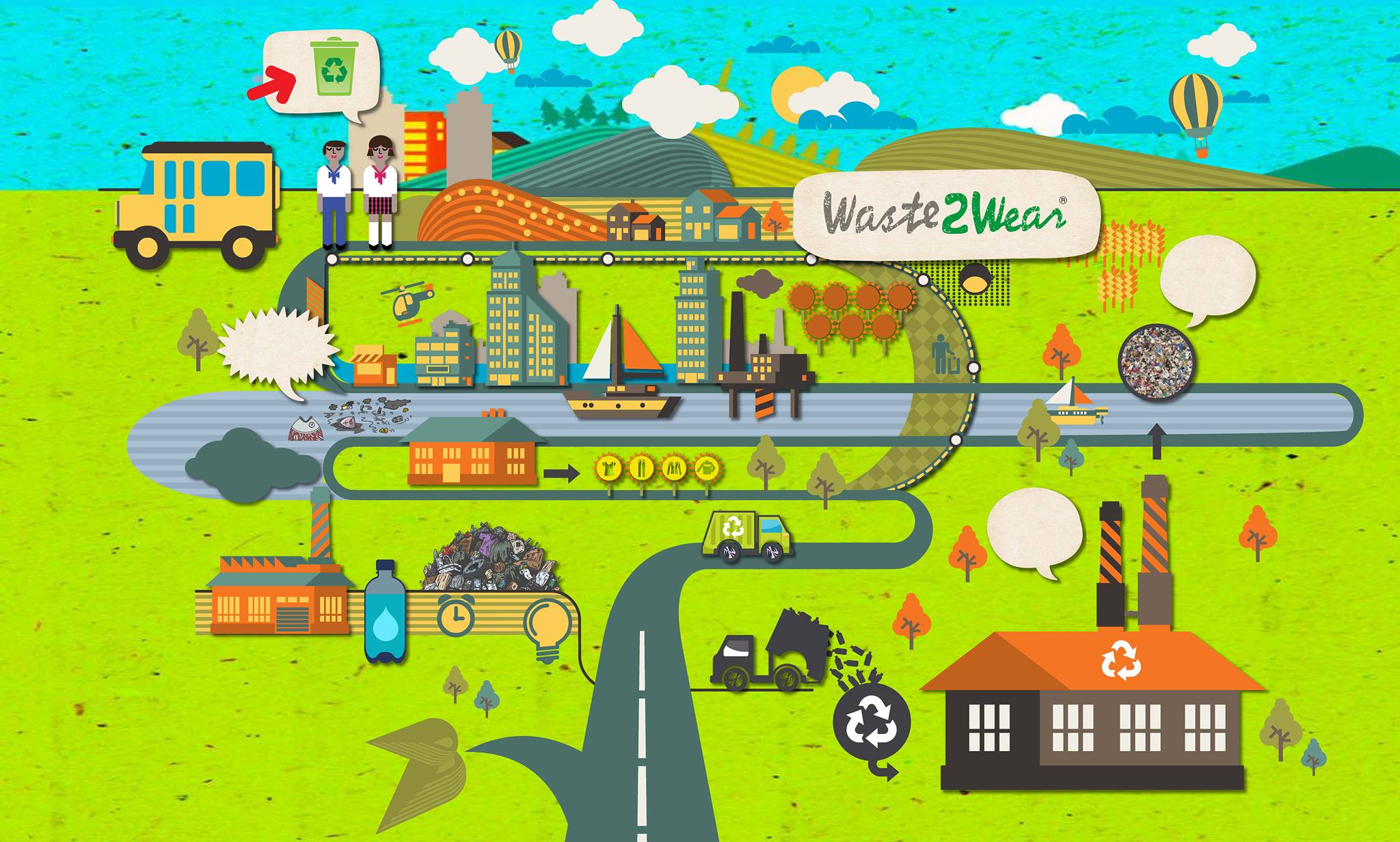When talking sustainability in fashion we have always maintained that it’s no alternative genre or sub-culture or a trend. It’s simply the way to operate, produce, retail & consume. Similarly when talking ethical issues like body size and representation, the pressure on fashion brands has led to increasing inclusion. So just as fashion needs to represent everyone who consumes it, we feel everyone who consumes fashion must think green. Not just western fashion but even regional fashion or traditional wear of all communities. To ensure everyone has access to green fashion, we have a very special guest who talks about the various ecofriendly Islamic Fashion brands bringing green fashion to Islamic communities.

Meet Sarah! Sarah is a London-based hijabista and a fashion consultant at Modanisa who is passionate about the modest fashion scene. Apart from keeping up with the latest hijab trends, she is also very keen on living a sustainable lifestyle, and always promotes eco-friendly choices such as repurposing or styling up old clothes for a fresh chic look. She believes that you don’t need to turn your life upside-down to be sustainable. It’s all about little, everyday green choices which she happily makes most of her life 🙂 Here she gives us suggestions, tips and ideas on how to green up ones modest and Islamic essentials.
Taking a Sustainable Look at Modest Fashion
We are all aware of the negative impact fashion can and does have on the environment. Being one of the most polluting industries, pollution happens at all these stages:
1. Raw materials – While materials like the widely used polyester comes from crude oil, growing cotton can have a severe impact on natural resources.
2. Production – Production techniques like dyeing etc consume huge amounts of water & have toxic residues which can pollute waterways & soil. And our ecosystems are connected so toxic fashion practices from the other parts of the world actually do end up in our regions and effect our bodies.
3. Retailing – In a race to have experiential stores & impact, brands these days have mega-stores that consume significant electricity. Then there’s the whole aspect of packaging. Then consider materials used for store construction & interiors.
4. Transport – From raw materials to supply of finished items, the carbon footprint of the fashion industry is massive.
5. Fast-fashion: Hectic fast-paced fashion where trends change every few months, our pace of consumption is only increasing creating more pressure on production as well as aggravating and multiplying the various negatives aspects of this polluting industry.
Add to this other ethical malpractices that this pace of hectic production creates on factories. The terrible working conditions practiced by many factories manufacturing for renowned labels was exposed with the Rana Plaza Factory disaster in Bangladesh. On April 24, 2013 the Rana Plaza factory building collapsed and killed 1.134 people and injured thousands, sadly considered the most terrible industrial accident that hit the fashion industry. The catastrophe revealed how awfully cruel and dangerous the workplaces within the garment industry in Bangladesh were.
Thankfully with increased pressure on both environmental & social front changes are beginning to be seen. We have covered ample independent green labels in swimwear, knitwear, sportswear that are also starting a new future in fashion. Brands like H&M are starting to put out sustainable collections made out of recycled ocean trash. Luxury brands are moving away from fur & leather or even lessening the amount of fashion shows in a year. Brands like G-star Raw, Sportswear ones like Adidas, Patagonia etc are beginning to use recycled plastic, ocean trash etc to manufacture clothes. Using either innovative recycled fabrics like ECONYL, or new sustainable materials like ProModal (a combination of two unique materials: Lenzing Modal, produced from rebuilt beech wood cellulose, and Tencel, from eucalyptus wood cellulose, the wood from which the material comes are renewable forests maintained without pesticides), sustainable fashion is getting more focus. But while many recycling programs are starting to pop up, not enough is being recycled nor is the technology to fully recycle all the waste produced available widely.
Keeping in line with this development in almost all spheres in fashion we bring to you green options in Islamic fashion.
Understanding modest fashion & Islamic fashion articles
Not too long ago, H&M surprised many with inclusion of a hijabi model Mariah Idrissi in their campaign and a similar step was also taken by Uniqlo, in collaboration with Hana Tajima. There are many hijabis around the world who like to stay up to date with the latest fashion trends and they welcomed this new and incredible change wholeheartedly. The decision was not just beneficial for the consumers of course, as the sellers too were well informed of the huge market for modest wear since the Muslim consumers are estimated to spend almost $327bn on clothing by 2019. A 12% of total global fashion!

For most Muslim women who opt for modest dressing, some of the basic fashion articles include hijabs (headscarves), abayas (outermost all-black covering), maxis, tights or leggings and some good layering pieces. These are usually considered to be “hijabi must-haves” and majority of them come in synthetic fibres like polyester and nylon. Buying clothes made out of these materials is no different than buying clothes made of plastic bags as they pollute the Earth in similar ways.
While for most items of modest fashion there are ample sustainable brand options, traditionally, hijabs and abayas have mostly been produced in Muslim countries. But with the popularity of modest fashion, many International brands have been investing in this area too. Some popular names include Nike and Dolce & Gabbana. While the latter have already released their collection back in 2016, Nike plans to launch it’s athletic hijabs in 2018. Sadly, Nike’s athletic hijab too is made of polyester so it won’t be an option for any eco-hijabi.


Here are some eco-brands for modest dressing and Islamic must-haves that participated in Fashion Revolution Week 2017 suggested by Sarah.
Gulshann, Paris / FRANCE
Parisian designer Imaan M’s ethical modest fashion label Gulshaan (Rose Garden), launched in 2014, is solely manufactured in Pakistan. Promoting traditional handmade embroidery, the label helps a vulnerable portion of the population: women. Everything is made by women in Pakistan who are divorced or widowed and who have very little means to support their families says the founder Imaan.
Gulshaan besides being ethically sensitive, also uses the fairtrade approach. They use natural fabrics – cotton, linen, wool and silk – woven in various qualities that don’t contain any chemical fibres and are kinder to the environment. Check their collection and shop here.

Al Mara Scarves, Leverkusen / GERMANY
Nouha Touati’s modest fashion brand Al Mara Scarves from Leverkusen, Germany, relaunched in April 2017 as an eco-friendly brand with fair production lines in Morocco and Germany. Organic cotton is woven in Germany, handcrafted by women in Morocco and stitched in Germany by five young female refugees from Afghanistan, Iraq and Syria. Check their collection and shop here.

Under-Rapt, Manchaster / UK
This brand is one of the most exciting ones because it makes sustainable modest sportswear and casual wear! Founder Yasmin Sobeih has a background in fashion buying & styling. UNDER-RAPT mixes performance requirements, modest design aesthetics and sustainable fabrics to bring a brand which is absolutely contemporary and functional. They use TENCEL® and MODAL® fabric in their designs which has sweat resistant, cooling and hygienic components which means that professional athletes from runners to boxers and gymnasts and both Muslim and Non-Muslim can wear the collection. Their designs such as the ‘Sports Hijab’ and ‘Hijab hooded base layer’, can be worn as a hijab or simply to keep hair up tight, ideal for both to stay fresh and cool during all workout activity. Both the sportswear and casual wear collections are made with the finest sustainable fabrics. Check out and shop their styles here.


More from the world of modest fashion…
Abeer Al-Azzawi, a young Canadian woman felt the lack of eco-friendly Muslim clothing and decided to bring some change in herself. Starting her own line of head-coverings under the name ‘Queendom Hijabs’, she ensures that all hijabs are made from sustainable materials like soy and bamboo based fabrics that breathe well, and are warm in winter and cool in summer
Another alternative is to shop from thrift stores or look for innovative products like the recently released hijabs by Malaysian company under the name Waste2Wear, Made by Kloth Malaysia the Hijabs are made from recycled plastic bottles. They have now expanded into other recycled merchandise too. Another option is Sadoq from Amsterdam which has scarves made out of bamboo.


Besides Hijabs & Abayas, there are also certain eco-friendly brands that cater specifically to the needs of clients who like to dress modestly. For example, the Paris based brand, Modestologie, takes modest fashion to a whole new level by offering minimalist essentials for women, made using sustainable fabrics.
Then in London, there’s also the London Modest Fashion Week which is a great platfrom for new emerging brands and talents working in the modest space. See the year 2017 participants here. Under-Rapt was one of the participants this year.
Tips to go green with your modest wardrobe…
Besides opting for green brands to shop from, Sarah explains how one can also practice many simple tips to consume fashion responsibly. To begin with buying less, buying sensibly and buying Hijabs which can be mixed and matched with various outfits is a good start. Buying neutrals that only go with maximum outfits but also serve variety of social outings is a great idea. But since fashion is universal, here are tips by founder Mirela Orlovic to help you have a green wardrobe, irrespective of your community, background, gender!


![[ALERTE GREENWASHING – CHAMBRE ENFANT] Les conseils pratiques d’un père engagé](http://urbanmeisters.com/wp-content/uploads/bfi_thumb/dummy-transparent-pyhloyclal4p5ty8tb4matytlyd4xyugzcd2z17fr6.png)

